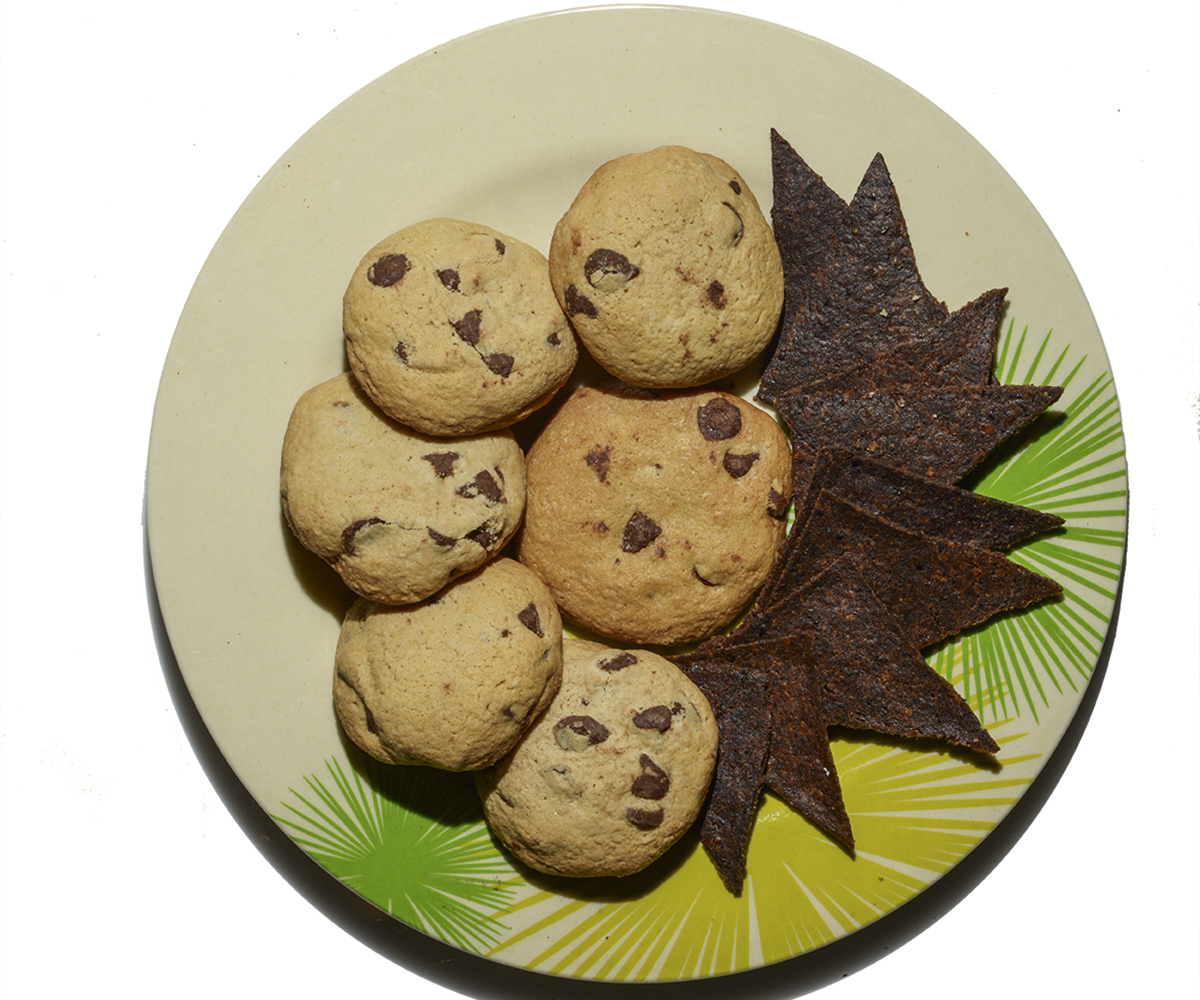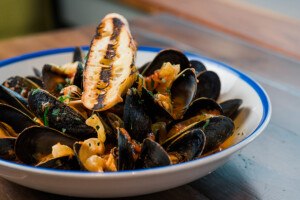Crickets, Mealworms, and the Rise of Entomophagy

Teriyaki crickets in an avocado sushi roll. Photo by Jackie Robertson.
Six Foods wants to change your perception on eating insects. Inspired by their travels abroad, and a 2013 U.N. report, which advocates for increased insect consumption, Laura D’Asaro, Rose Wang, and Meryl Natow began exploring ways to take the “ick”-factor out of alternative sources of protein. On April 22, their six-legged snack food crusade goes public as they officially launch a Kickstarter campaign to raise $30,000 for their burgeoning business.
“As an African Studies major in college (at Harvard), I went to Tanzania and I ate fried caterpillars. For me it was love at first taste,” says D’Asaro.
“I think Laura assumed I was going to grossed-out, but actually I had just come back from China, where on the streets of Beijing someone had dared me to eat a fried scorpion,” says Wang. “I tried it and it tasted like shrimp, without the fishy taste. I was pleasantly surprised by how much I liked it. So seeing that article was perfect timing. I read the U.N. report and it was such an intriguing idea.”
As the two started to do more research on the project, they came across some alarming statistics. Snacking on crickets might seem like a far-fetched idea, until you start looking at the facts. Due to rampant population growth, scientists predict that global demand for meat will double by the year 2050. “The cattle industry already used 50 percent of our water and 10 percent of our arable land,” says Wang. “How can we expand that? It’s a demand we’re currently unable to meet.”

Lettuce-wrapped “tacos” made from ground mealworms. Photo by Jackie Robertson.
The three friends dubbed their company Six Foods (“because six legs are better than four”) and began collaborating with an urban insect farm in Youngstown, Ohio. The company, Tikkun Olam (a hebrew phrase meaning “repair the world”), is a progressive umbrella of startups in America’s Rust Belt, one of which is Dean’s Urban Life Challenge, an environmentally-friendly cricket grower.
“What’s really exciting about insects—besides the eating of them—is that you can grow them in cities,” says D’Asaro. “You can’t grow cows and pigs because they’re too resource intensive. But insects are the most efficient creatures for converting feed to food. Youngstown (named one of Forbes’ “20 Most Miserable Cities”) is kind of like Detroit, they have all these abandoned warehouses that are perfect for growing insects. Tikkun Olam is a large part of the revitalization effort in Youngstown. But our partnership also provides people with this entire transparency of where the insects are coming from. It’s not digging them out of your backyard, they’re grown in very controlled environments.”
But what about all those obvious hangups with wiry little legs, feelers, and crunchy exoskeletons? Six Foods hopes to wean weary consumers into entomophagy converts through sweet and salty snack foods. “We have an entire product roadmap that we’ve planned out,” says Wang. “The first thing that we have to establish is that insects are a food. We want to do that in the least scary, most controlled way possible, which is why we’re grinding the crickets into a flour that looks like brown sugar and sticking it in packaged snack foods.”
One of the products Six Foods is unveiling as part of their upcoming Kickstarter campaign is chocolate “chirp” cookies made with ground cricket flour, sugar, and chocolate chips. Another is “chirp” chips, which combines dehydrated black and pinto beans along with the aforementioned cricket flour.

Chocolate “Chirp” Cookies and “Chirp” Chips made by Six Foods. Photo by Jackie Robertson.
Wang and D’Asaro are also working closely with chefs like Sofra Bakery’s Geoff Lukas and the team at Mei Mei Street Kitchen, to open up more culinary possibilities. Irene Li at Mei Mei is fermenting mealworms to make garum and Lukas has been adjusting mealworm diets to draw-out different flavors in various dishes.
“What’s super interesting about insects, compared to animals, is that you can actually change the flavor profile based on what you feed them,” says Wang. “We actually did these experiments with Geoff where we fed mealworms different spices like chamomile and coriander. Those flavors were preserved after digestion.”
Six Foods 30-day Kickstarter campaign is attempting to raise enough to assist with manufacturing and packaging costs. Their initial goal is to find distribution in natural food stores, since insects are low-fat, vitamin-rich (iron, B vitamins, and zinc), and high in protein.
Afterward, they hope to branch out into what they call “meat products.” That will include whole insects and commodities like their ground mealworms, which they’re promoting as beef or soy substitutes. Six Foods has even developed several recipes to highlight the myriad applications of insects. How about sauteed teriyaki crickets nestled in avocado sushi rolls or mealworm tacos fried with onion, garlic, and cumin.
“We’re currently not on the supply side right now, because there’s not enough demand,” says Wang. “But our whole plan is to create that demand on the consumer side. As someone who is vegetarian, this is a whole undiscovered food group. Top chefs from around the world like José Andrés and Grant Achatz are even experimenting with insects. This really has the potential to become mainstream. Remember, lobsters used to be considered the cockroach of the sea. It’s all how you look at it and present it.”


